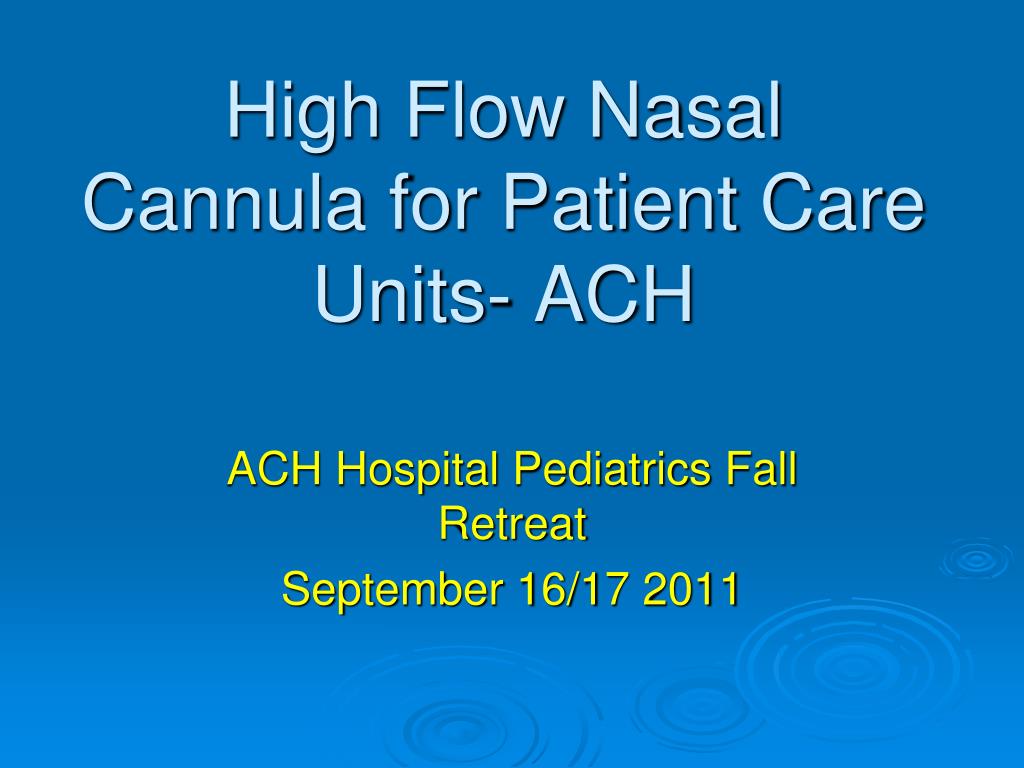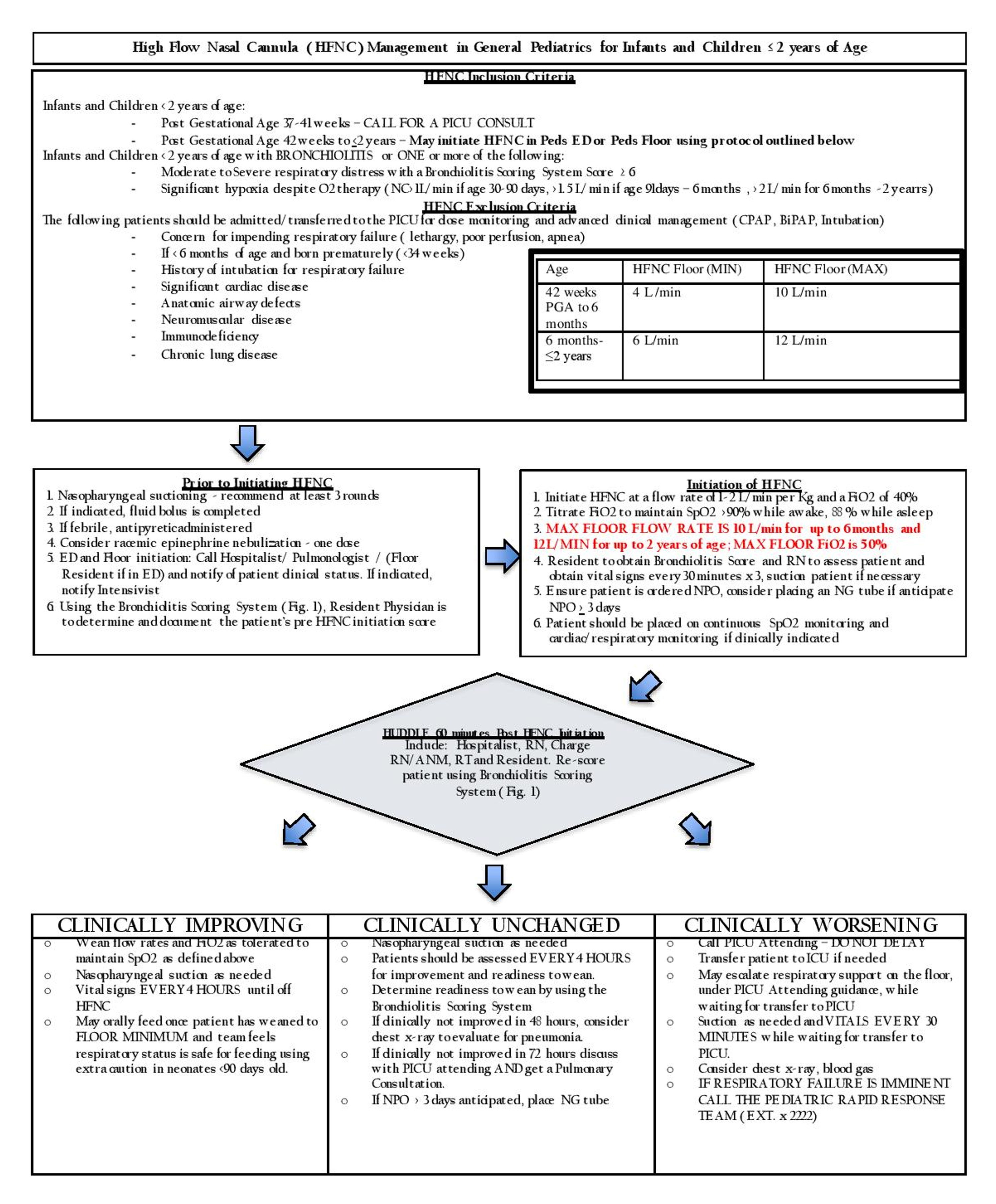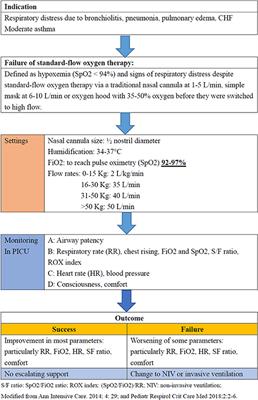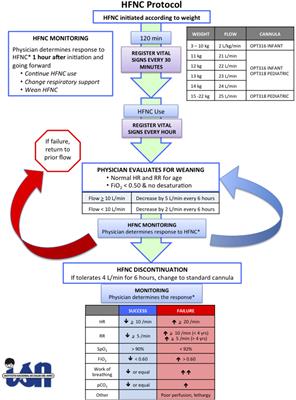High Flow Nasal Cannula Flow Rate Pediatrics
One patient could not tolerate the cannula. These patients were evaluated for changes in fraction of inspired oxygen (fio 2), ph, and pco 2 values after 24 hours.

Pdf Safety And Efficacy Of High-flow Nasal Cannula Therapy In The Pediatric Emergency Department Semantic Scholar
Table 2 nasal cannula flow rate recommendations.

High flow nasal cannula flow rate pediatrics. The use of heated and humidified high flow nasal cannula has become increasing popular in the treatment of patients with acute respiratory failure through all age groups. Of the remaining 32 patients, 81% (n=26) had an actual initial flow rate within 1 l of the target flow rate; High flow nasal cannula (hfnc) oxygen delivery is a commonly used method of noninvasive respiratory support for critically ill children.
We conducted a pre‐post intervention study of patients placed on hfnc therapy before and after the implementation of an hfnc protocol. 1 recent randomized controlled trial data highlight that hfnc may be superior to “regular” nasal cannula in preventing treatment failure or the need for intensive care for children with moderate bronchiolitis. 2 several retrospective studies have agreed.
In pediatrics, high‐flow nasal cannula (hfnc) therapy is an intermediate level of respiratory support with variability in practice. Our objective with this study was to describe the use of hfnc for bronchiolitis in a pediatric emergency department (ed) from 2013 to 2019 and to explore associations with clinical outcomes.methods:. In part 1 we summarized how high flow nasal cannula (hfnc) works.
High flow may increase the functional residual capacity, or frc , at the end of expiration, not due to increased peep, per se, but due to alveolar distension. As we will discuss in our next section, pediatric data (particularly in bronchiolitis) shows that flow rates of 2 l/kg/min are effective and well tolerated up to maximum flow rates of 60 l/kg/min in adults. There are limited data to inform consensus on optimal device parameters, determinants of successful patient response, and indications for escalation of support.
Clinical scores, such as the respiratory rate. Setting flow rates for infants and children. The flow rate and fi02 can be independently titrated based on your patient’s flow and fi02.
2 technological advances, ease of use, and relative low cost, combined with the widespread availability of commercial systems,. In part 2, we will discuss the main indications for its use in adult and pediatric patients. We hypothesized that hfnc would perform similarly to the aerosol mask for meaningful clinical outcomes in.
The use of nasal cannula adapted to the infant’s nares size to deliver heated and humidified gas at high flow rates has been associated with improvements in washout of nasopharyngeal dead space, lung mucociliary clearance, and oxygen delivery compared with other oxygen delivery systems. Size flow rate all premature cannulas ≤3 lpm all neonatal cannulas ≤3 lpm all infant ≤cannulas 3 lpm all intermediate infant/toddler cannulas ≤ 3 lpm pediatric cannulas ≤ 6 lpm pediatric high flow cannulas ≤ 15 lpm adult conventional cannulas ≤ 6 years adult micro cannulas ≤ 3 lpm adult quit cannulas ≤ 8 lpm adult high flow cannulas ≤ 15 lpm. The relationship between high flow nasal cannula flow rate and effort of breathing in children.
Standard nasal cannulae may not be able to match the higher inspiratory flow rates needed in the respiratory failure of bronchiolitis. Heat and humidified high flow nasal cannula or as most call it, hi flow nasal cannula (hfnc), isn’t just a standard nasal cannula cranked up to very high flow rates.

Hd - High Flow Nasal Cannula Emrap

Ppt - High Flow Nasal Cannula For Patient Care Units- Ach Powerpoint Presentation - Id3553812

Pdf High-flow Nasal Cannula Therapy In Children With Acute Respiratory Distress With Hypoxia In A Pediatric Intensive Care Unita Single Center Experience

Cureus The Use Of High-flow Nasal Cannula And The Timing Of Safe Feeding In Children With Bronchiolitis

High Flow Nasal Cannula Pediatricsyasserchemicalscom

Efficacy Of High-flow Nasal Cannula Vs Standard Oxygen Therapy Or Nasal Continuous Positive Airway Pressure In Children With Respiratory Distress A Meta-analysis - The Journal Of Pediatrics

Flow Chart Picu Pediatric Icu Hfnc High-flow Nasal Cannula Niv Download Scientific Diagram
2
Msgicjackcom

The Use Of High-flow Nasal Cannula In The Pediatric Emergency Department Jornal De Pediatria

Characteristics And Outcome Of High-flow Nasal Cannula Episodes Download Table

Frontiers High-flow Nasal Cannula Therapy In Children With Acute Respiratory Distress With Hypoxia In A Pediatric Intensive Care Unita Single Center Experience Pediatrics

Initial Or Starting Flows Of High-flow Nasal Cannula In A Pediatric Download Table

High-flow Nasal Cannula - List Of Frontiers Open Access Articles

Pdf High-flow Nasal Cannula Oxygen Therapy In Children A Clinical Review Semantic Scholar

High Flow Nasal Cannula Hfnc - Part 2 Adult Pediatric Indications - Rebel Em - Emergency Medicine Blog

Pdf Peep Generated By High-flow Nasal Cannula In A Pediatric Model Semantic Scholar

What Role For High Flow Nasal Cannulae Neonatal Research

End-expiratory Esophageal Pressures Generated By Different High-flow Download Table
You have just read the article entitled High Flow Nasal Cannula Flow Rate Pediatrics. You can also bookmark this page with the URL : https://naomijez.blogspot.com/2021/08/high-flow-nasal-cannula-flow-rate_25.html
0 Response to "High Flow Nasal Cannula Flow Rate Pediatrics"
Post a Comment